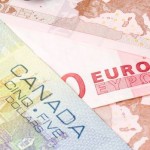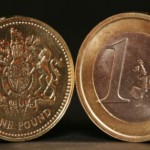The Aussie dollar traded little changed, close to a more than four-month high, against its US counterpart after traders reduced bearish bets to the weakest level in almost a year and as Australian employers added the highest number of workers since May 2012.
AUD/USD hit a session high at 0.9296 at 00:15 GMT, after which consolidation followed at 0.9289, losing 0.03% for the day. Support was likely to be received at April 4th low, 0.9230, while resistance was to be met at April 4th high, 0.9306, also the pairs highest since November 21.
The Aussie held a three-week advance against the greenback after hedge fund managers and other large market players reduced their net short positions, or bets for a decline of the currency, to 4 880 contracts last week, the weakest since they hold bearish position in the week ended May 14, data by the US Commodity Futures Trading Commission showed. Net short positions hit a record high of 76 779 in August.
“With recent domestic data showing signs of improvement, the market has been very quick to remove shorts,” said Robert Rennie, Sydney-based head of currency and commodity strategy at Westpac Banking Corp., cited by Bloomberg. “Short term, momentum is still up for Aussie.”
Also fanning positive sentiment, Australian employers added 47 300 workers in February, more than triple the median analyst forecast and the highest number since March 2012.
Meanwhile, demand for the greenback was pressured on Friday, after payrolls data came below market expectations.
Employers in all sectors of the US economy, excluding the farming industry, added 192 000 new jobs in March, after a revised 197 000 gain in the precious month that was higher than previously reported. The median experts’ forecast called for 200 000 new payrolls to be added last month. Jobs creation is considered of utmost importance for consumer spending, which accounts for almost 70% of the US economy.
In 2013, the US added 194 000 payrolls each month on average, while in 2012 the jobs created were 186 000.
Fed President for St. Louis James Bullard said on April 2 that if inflation slows further, decreasing the pace of Fed tapering cannot be ruled out, even though he didn’t expect that to happen.
However, Federal Reserve Chair Janet Yellen said on March 31 that the central bank needed to do more to fight against unemployment, because keeping interest rates near zero for more than five years and swelling its balance sheet with asset purchases seemed not to be enough. She also added that the US economy still needed monetary stimulus for “some time” and that most of the Fed officials shared the same opinion.
“The Fed is continuing to taper and there’s a relatively high hurdle for any deviation from that,” Eric Viloria, a currency strategist at Wells Fargo & Co. in New York, said in a Bloomberg phone interview on Friday.
The dollar rallied last month after Federal Reserve Chair Janet Yellen said the central bank’s bond-buying program may be brought to an end this fall, with borrowing costs starting to rise by mid-2015. The Federal Reserve trimmed its monthly bond-buying program by $10 billion at the last three meetings.
Elsewhere, NZD/USD hit a session high at 0.8612 at 00:15 GMT, after which the pair consolidated at 0.8606, adding 0.06% for the day. Support was likely to be received at April 4th low, 0.8531, while resistance was to be encountered at April 2nd high, 0.8618. NZD/USD touched 0.8702 on April 1, the strongest since August 2011.





